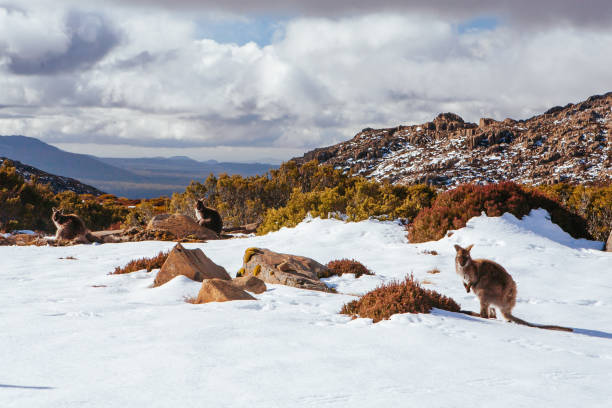Discover About the Unique Weather Patterns That Bring Snow In Australia Each Winter
Discover About the Unique Weather Patterns That Bring Snow In Australia Each Winter
Blog Article
Discover the Fascinating Impacts of Snow in Australia on Regional Environments
Regardless of its online reputation for sun-soaked landscapes, Australia likewise flaunts areas buried by snow-- a sensation that profoundly affects the country's special environments. The insulating properties of snowflakes safeguard flora and animals amidst the chilliest wintertimes, while the melting snow nurtures rivers and aquatic life.
The Unanticipated Areas of Snowfall in Australia
Although Australia is often associated with sun-scorched landscapes and sandy coastlines, specific areas remarkably experience snowfall. The high nation regions of New South Wales, Victoria, and Tasmania are particularly understood for their wintertime snow. The Snowy Mountains in NSW, for example, get bountiful seasonal snow, offering a stark contrast to the country's normal hot, arid environment. At the same time, the Victorian Alps and components of Tasmania likewise see annual snowfalls, transforming the landscape right into a winter heaven. These areas are not just abnormalities yet integral parts of Australia's varied climate system. The presence of snow in these areas substantially affects local environments, subsequently influencing the nation's special biodiversity. The particular effect on Australia's distinct flora will be gone over in the next section.

Just How Snow Impacts Australia's Distinct Plants
While it may appear unusual, snowfall in Australia plays a critical duty in forming the country's distinct flora. The snow-filled wintertimes foster durability in Australian plant types. This is especially evident in the sub-alpine and towering areas, where snow periodontals and hill plum-pines flourish. These plants have progressed to make it through in extreme conditions, with snow offering as a protective blanket from extreme winds and freezing temperature levels. The snow likewise adds to the wetness web content of the soil, giving required hydration for plant life throughout the completely dry summertime months. Basically, the snow affects the timing of blooming and seed dispersal, the growth prices, and the survival of many plant varieties, showcasing the elaborate interaction in between environment and plants in Australia.

The Adjustments of Australian Fauna to Snowfall
Simply as Australia's plants has actually adjusted to the wintery problems, the local animals as well, display impressive adaptations to the snowfall. It uses the snow as insulation, hibernating in rock crevices underneath the snow to remain warm. The Snow Skink, a types of lizard, transforms its colour to white during winter, providing camouflage against predators.
The Function of Snow in Forming Regional Ecosystems
In forming the local ecosystems, the duty of snow in Australia is both multilayered and extensive. It affects the distribution of vegetation and animals, greatly defining the biodiversity of sub-alpine and towering areas. Snow supplies a critical water source, feeding rivers and storage tanks as it thaws, thus supporting a range of marine life kinds. In addition, snow acts as an insulator, safeguarding ground-dwelling microorganisms from extreme cold. In a similar way, it plays a considerable function in dirt development and nutrient biking. The regular cold and thawing of soil induced by snowfall cultivates the break down of rocks, enhancing soil fertility. The existence of snow shapes the greenery patterns, pet behavior, and total sustainability of Australia's special ecological communities.

The Future of Snowfall in Australia: Implications and predictions

Given the important duty snow plays in shaping regional communities, the future of snowfall in Australia is drawing enhancing focus from ecologists and researchers. Existing environment versions anticipate a considerable reduction in snowfall due to international warming, with potentially profound influence on neighborhood environments. Less snow might lead to lowered water schedule in towering areas, adversely impacting wildlife environments and plant life. Additionally, it could modify the timing of seasonal modifications, interrupting the life cycles of many indigenous species. The tourism industry, greatly reliant on the wintertime snow period, might additionally face substantial challenges. Consequently, understanding these predictions and their effects is critical to create efficient preservation go to my site techniques, making certain the conservation of Australia's distinct biodiversity and the sustainability of its economic situation.
Verdict
The duty of snow in Australia's ecological communities is advice critical yet commonly neglected. It functions as a protector, a nurturer, and a shaper of diverse alpine varieties, adding to the splendor of Australia's high nation. As climatic patterns remain to shift, recognizing the ramifications and prospective improvements of these snow-influenced communities is vital. Therefore, the snow in Australia is greater than a natural spectacle; it's an important gamer in the nation's ecological narrative.
In spite of its track record for sun-soaked landscapes, Australia additionally boasts regions buried by snow-- a sensation that profoundly affects the country's one-of-a-kind ecosystems. It utilizes the snow as insulation, hibernating in rock holes below the snow to remain warm - Snow In Australia.In shaping the regional ecosystems, the duty of snow straight from the source in Australia is both extensive and multilayered. The visibility of snow forms the vegetation patterns, pet actions, and overall sustainability of Australia's one-of-a-kind ecological communities
Provided the essential role snow plays in shaping neighborhood environments, the future of snowfall in Australia is attracting raising interest from researchers and conservationists.
Report this page